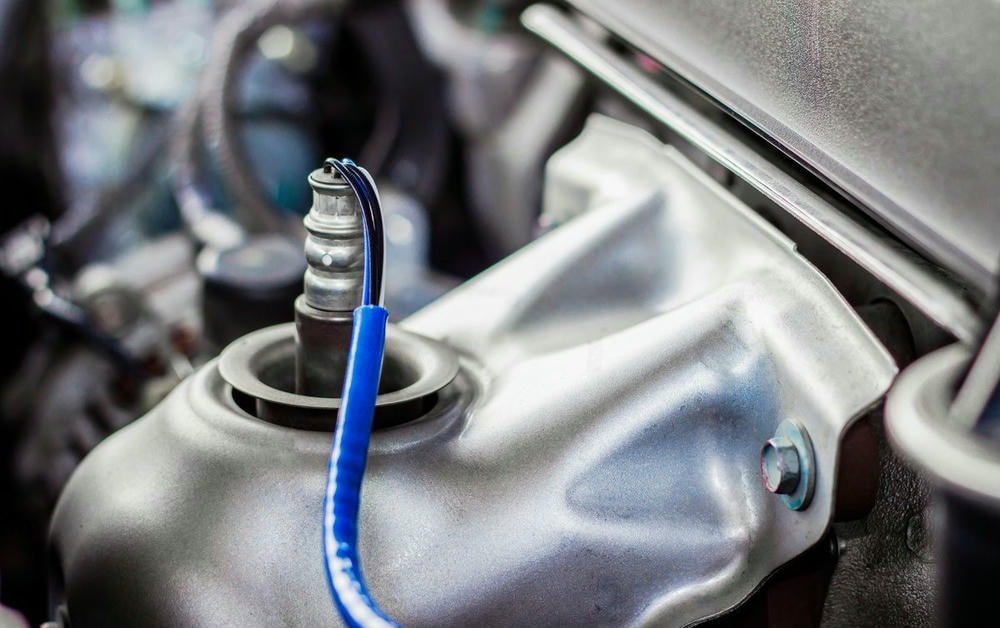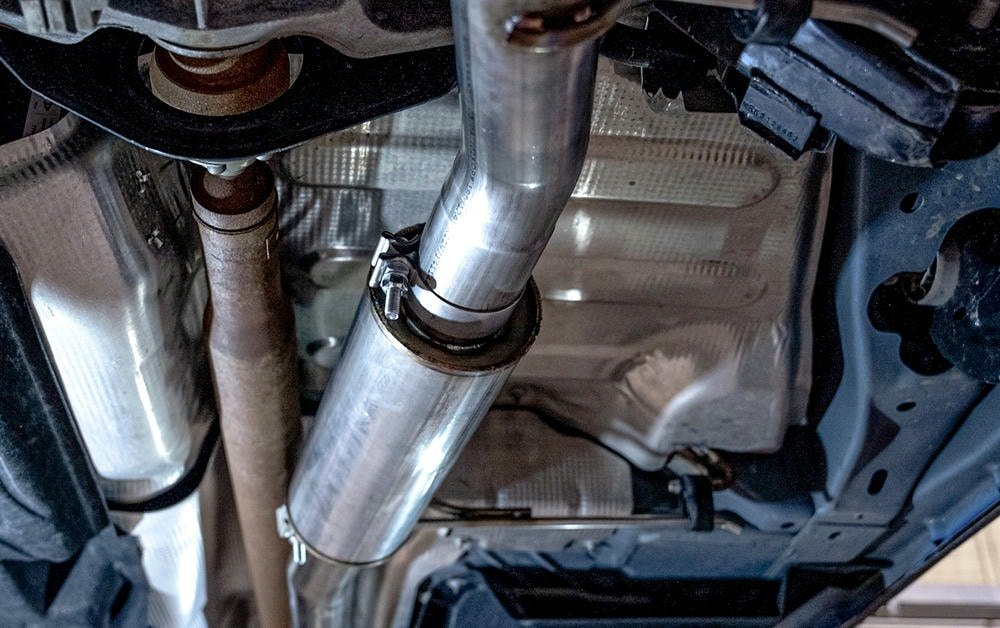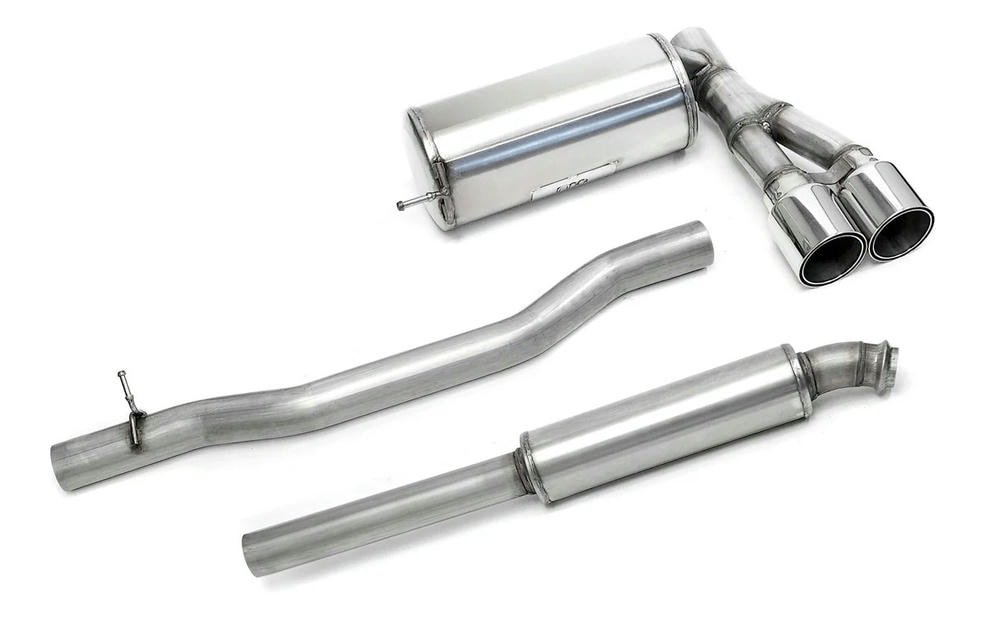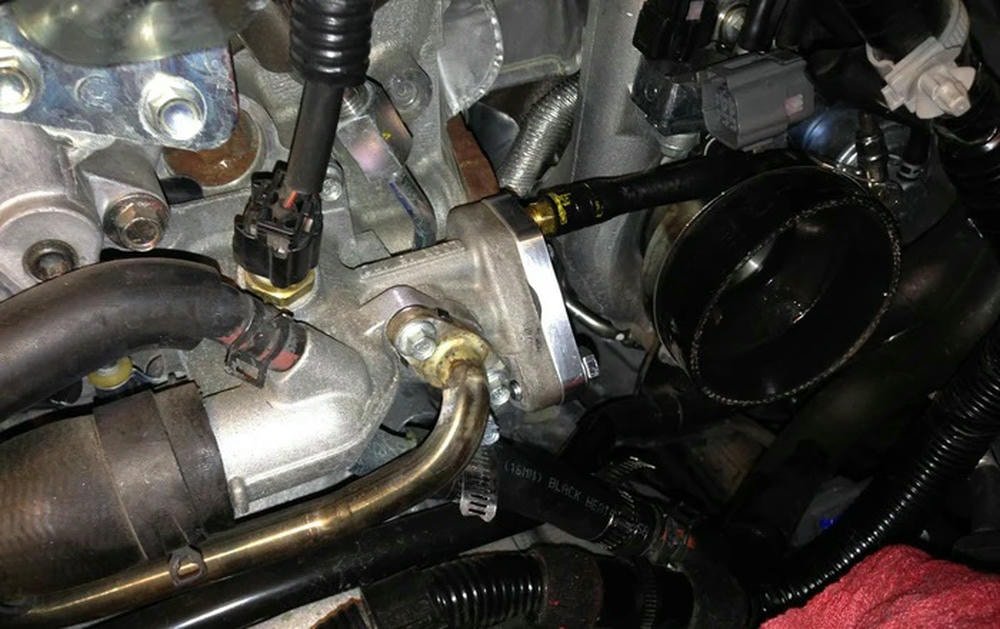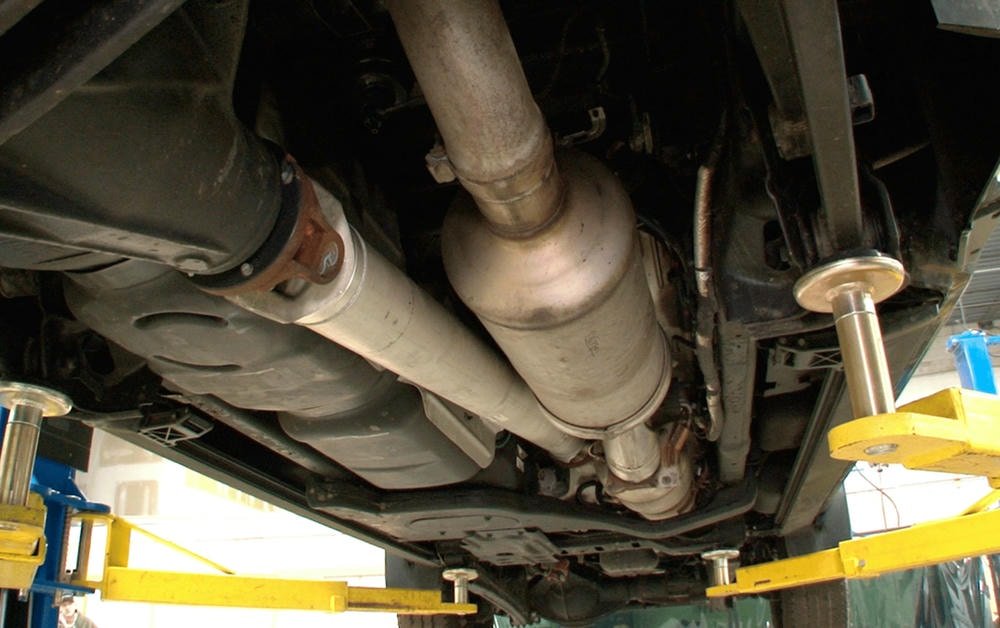Engine sensors play a key role in making trucks run smoothly and use less fuel. These sensors, such as the oxygen sensor, MAF sensor, MAP sensor, and coolant temperature sensor, help adjust how much air goes into the engine with the fuel.
This mix is important for keeping engines working well without wasting gas. When these sensors do not work right, trucks can use more fuel than they need to and cause pollution. To avoid this problem, it’s good to check these parts often and replace them when needed.
Tools like diagnostic scanners make it easier to watch how these sensors are doing over time. Keeping an eye on them helps save money on repairs and keeps the air cleaner by using less fuel.
Keep reading to learn more about engine sensors and how they affect your truck’s fuel use.
Inhaltsübersicht
Umschalten aufThe Role of Key Engine Sensors in Fuel Efficiency
Engine sensors play a crucial role in boosting fuel efficiency. They monitor and adjust the engine’s operations, ensuring optimal performance and reduced fuel usage.
Oxygen (O2) Sensors
Oxygen sensors play a big role in diesel trucks. They check the exhaust for how much oxygen is there. This tells the truck’s computer how to mix air and fuel right. A good mix means the engine runs well and uses less diesel.
These sensors can find if a mixture is too rich or lean. Too much fuel (rich) or not enough (lean) can hurt efficiency. With accurate data from O2 sensors, trucks stay powerful without wasting fuel.
This keeps costs down and cuts pollution too.
Truck owners see benefits like better mileage and lower emissions when these sensors work right. Keeping them clean and working avoids problems with performance and fuel use.
Mass Air Flow (MAF) Sensors
Mass Air Flow (MAF) sensors play a crucial role in managing Kraftstoffeffizienz in diesel engines. These sensors measure the amount of air entering the engine and send this data to the Engine Control Unit (ECU).
The ECU then uses this information to adjust the air-fuel mixture, ensuring it’s just right for combustion. A well-balanced mixture helps in reducing fuel consumption and emissions.
MAF sensors impact diesel truck performance significantly. If they malfunction, air flow readings become inaccurate. This leads to poor engine performance, increased emission of pollutants, and higher fuel usage.
Keeping MAF sensors clean and functional ensures vehicles run smoothly with better mileage.
A healthy MAF sensor is key to optimizing your diesel truck’s fuel efficiency.
Manifold Absolute Pressure (MAP) Sensors
Manifold Absolute Pressure (MAP) sensors are key in diesel trucks. They measure the air pressure inside the intake manifold. This info helps control fuel injection and ignition timing for better fuel economy.
A precise MAP sensor ensures the engine runs smoothly, uses less fuel, and emits fewer pollutants.
Faulty MAP sensors lead to problems like poor performance and more fuel use. Diesel truck owners should check these sensors often to avoid issues. Keeping them clean and replacing them when needed makes a big difference in how well a truck runs.
Coolant Temperature Sensors
Coolant temperature sensors play a key role in managing fuel efficiency in diesel engines. These sensors measure the temperature of the coolant. Then, they send this data to the engine control unit (ECU).
The ECU uses this information to adjust the fuel-air mix. It makes sure the engine runs at its best without using too much diesel.
These sensors help keep emissions low and prevent engine damage. They do this by making sure the engine does not get too hot or cold. If a sensor is not working right, it can lead to poor fuel use and more pollution from exhaust gases.
For diesel truck owners, checking and maintaining these sensors is important for good mileage and keeping their trucks running well.
How Sensors Optimize Fuel-Air Mixture
Engine sensors make real-time tweaks to keep the fuel-air mix just right, helping engines run smoother and save more gas. Discover how these smart tools work together for better performance.
Real-Time Adjustments for Optimal Combustion
Sensors in diesel trucks make sure fuel and air mix in the best way for burning. They check oxygen, airflow, and pressure. This helps engines use less fuel while giving more power.
Sensors also keep an eye on coolant temperature. This makes sure the engine works well in all conditions.
These sensors send info to the truck’s computer system. The system then changes how much fuel goes into the engine and when sparks happen for starting it. These quick changes make sure the engine burns fuel well at different speeds and loads.
Real-time sensor adjustments lead to better performance and lower fuel use.
Impact on Air-Fuel Ratio (AFR)
Engine sensors play a big role in setting the right mix of air and fuel. This mix is crucial for diesel trucks to run well. Sensors like the oxygen sensor and mass airflow sensor measure how much oxygen is in the exhaust and how much air enters the engine.
They send this info to the truck’s computer. Then, it adjusts how much fuel goes into the engine to keep the air-fuel ratio balanced.
A correct air-fuel ratio helps engines burn fuel more efficiently. This leads to less fuel use and lower emissions from trucks. If this balance isn’t right, trucks can use too much fuel and emit more pollution.
So keeping these sensors working well is key for good performance and keeping costs down.
Influence on Ignition Timing
Ignition timing is vital for the efficiency of diesel trucks. Sensors such as the knock sensor and the manifold absolute pressure sensor regulate the ignition of fuel within the engine.
These sensors ensure optimal burning time for the fuel, thereby increasing the power and fuel economy of trucks. Proper ignition timing also helps prevent engine knock, which can cause potential harm to engine parts.
Diesel truck owners understand from personal knowledge that precise ignition timing reduces engine wear. This results in smoother vehicle operation and lower fuel consumption, underscoring the importance of sensors in maintaining vehicle performance and fuel cost savings.
Owners pay attention to their engine check light and consistently utilize diagnostic tools to assess sensor performance. This attention to detail ensures their trucks operate effectively over extended periods.
How Faulty Sensors Affect Fuel Efficiency
Faulty sensors in a diesel truck can lead to bad fuel use. They send wrong signals that mess up the engine’s mix of air and gas, making it burn more fuel than needed.
Poor Fuel Combustion Leading to Increased Consumption
Poor fuel combustion in a diesel truck’s engine leads to more fuel use. Sensors play a big role in this process. If sensors like the oxygen or mass air flow sensors do not work right, the engine control unit (ECU) gets wrong information.
This makes the fuel and air mix badly. The result? The truck uses more diesel than it should.
One owner saw their diesel consumption go up sharply. They used diagnostic tools to check the problem. They found out that the coolant temperature sensor was sending incorrect signals to the ECU.
After replacing this sensor, their truck returned to normal diesel use and had better power on the road. This shows how critical proper sensor function is for fuel efficiency in diesel engines.
Delayed or Incorrect Adjustments by the ECU
The engine control unit (ECU) acts like the brain of a diesel truck, making sure everything runs smoothly. But sometimes, it gets things wrong or takes too long to adjust. This happens when sensor signals are off due to wiring issues or faults in the sensors themselves.
For example, if an oxygen sensor sends incorrect data about exhaust gases, the ECU may change the fuel mixture in ways that hurt fuel efficiency.
Owners have seen how delayed adjustments lead to their trucks using more diesel than needed. One common sign of this problem is a sudden drop in miles per gallon without any obvious reason.
Mechanics use diagnostic tools to check for these errors by examining error codes stored by the ECU. Fixing these issues quickly helps avoid extra fuel costs and keeps emissions low.
An accurate diagnosis from diagnostic tools can prevent wasted fuel and high emissions.
Increased Emissions and Potential Engine Damage
Faulty sensors in diesel trucks can lead to engine trouble. These vehicles depend on sensors for the right mixture of air and fuel. If sensors do not work well, this mix is off. Then, the truck uses too much fuel and releases more pollution.
Damage to parts like catalytic converters can happen too. This part cleans harmful gases before they leave the Auspuffanlage. With bad sensor information, these gases are dirtier.
Repairs for such damage are costly and take time.
Owners see signs like a check engine light or poor mileage as warnings of sensor problems. Using diagnostic tools early helps avoid bigger issues later.
Maintaining Sensors for Optimal Fuel Efficiency
Keeping sensors in top shape helps cars use less fuel. Regular checks and cleanings, replacing old sensors, and using diagnostic gadgets make sure the engine runs well.
Regular Inspection and Cleaning
Regular inspection and cleaning of engine sensors are critical for maintaining Kraftstoffeffizienz in diesel trucks. These actions ensure that the sensors deliver accurate data to the engine’s computer, optimizing performance.
- Check oxygen (O2) sensors every 6,000 miles. These sensors measure how much oxygen is in the exhaust. This tells the truck’s computer how to adjust the air-to-fuel ratio. Dirty or failing O2 sensors can cause a rich mixture, wasting fuel.
- Inspect mass air flow (MAF) sensors during routine oil changes. MAF sensors calculate the air entering the engine and determine how much fuel to inject. A dirty MAF sensor can lead to incorrect air-to-fuel mixtures, reducing efficiency.
- Clean manifold absolute pressure (MAP) sensors annually. MAP sensors help gauge the amount of air in the intake manifold, affecting fuel injection timing. Dust and debris can block the sensor, leading to poor performance.
- Monitor coolant temperature sensors every 9,000 miles. These sensors adjust the engine’s operating temperature for optimal fuel combustion conditions. Faulty readings due to buildup can mislead the engine control unit (ECU), increasing consumption.
- Verwenden Sie Diagnosewerkzeuge monthly to check sensor function. Tools like OBD-II scanners reveal errors in wiring connections and sensor accuracy, preventing unnoticed issues from worsening fuel economy.
- Replace faulty wiring systems as soon as problems are detected to ensure signals between sensors and the ECU are clear and reliable.
- Record all inspections and cleanings in a maintenance logbook for future reference, aiding in timely maintenance schedules and identifying recurring issues before they lead to serious damage or inefficiency.
Following these steps reinforces vehicle reliability while helping diesel truck owners save on fuel costs over time through reduced consumption and emissions.
Timely Replacement of Faulty Sensors
Faulty engine sensors can result in decreased fuel efficiency and increased emissions in diesel trucks. Prompt substitution of these sensors guarantees smooth vehicle operation and optimal fuel consumption.
- Oxygen (O2) Sensors quantify the extent of oxygen in the exhaust. It’s optimal for diesel truck owners to substitute them every 60,000 to 90,000 miles. This ensures that the engine management system correctly regulates the air-fuel mixture for efficient combustion.
- Mass Air Flow (MAF) Sensors measure the volume of air entering the engine. A dirty or failing MAF sensor can trigger rough idling or sudden stops. Regular cleaning and replacement when performance declines help maintain the right air-to-fuel ratios for improved mileage.
- Manifold Absolute Pressure (MAP) Sensors evaluate the pressure inside the intake manifold, affecting fuel injection and ignition timing. Faulty MAP sensors can lead to engines misfiring or consuming too much fuel. Regular checks during standard maintenance and replacements as required contribute to optimal diesel engine performance.
- Coolant Temperature Sensors assist in managing engine temperature by conveying coolant heat levels to the Engine Control Unit (ECU), which impacts fuel economy and emissions. Substituting a defective sensor ensures that fuel burns efficiently under any operating circumstances.
- Regularly monitoring diagnostic trouble codes through onboard diagnostics (OBD) systems aids in early identification of deteriorating sensors. The use of OBD readers for regular surveillance provides diesel truck owners with the advantage of spotting issues before they develop into larger complications.
- Regular inspections and cleaning of all accessible sensors prevent buildup that can impair sensor performance, ensuring their accuracy over extended durations.
- The use of quality replacement parts extends sensor life and prevents frequent failures. This helps save money on continuous auto repairs due to poor performance caused by inferior components.
- Diesel mechanics often propose creating a sensor check and replacement plan based on manufacturer guidelines, individual driving habits, climate conditions, and vehicle usage patterns. This ensures all sensors operate correctly throughout the truck’s life cycle.
Every step taken in maintaining and replacing faulty sensors improves a diesel truck’s health. It optimizes fuel efficiency, reduces emissions, ensures smoother operation, and avoids expensive automotive mechanics costs in the long run.
Monitoring Sensor Performance with Diagnostic Tools
Monitoring sensor performance is crucial for diesel truck owners to maintain fuel efficiency. Diagnostic tools play a key role in this process.
- Use an On-Board Diagnostics (OBD) scanner to read engine codes. These scanners plug into the OBD port on your truck. They show if sensors are not working right.
- Look at live data streaming from engine sensors through diagnostic software. This software lets you see how sensors like the Mass Air Flow (MAF) and Oxygen (O2) are performing in real-time.
- Perform regular checks with a multimeter on sensors like the Manifold Absolute Pressure (MAP) sensor. This tool measures voltage and resistance, showing if a sensor is faulty.
- Apply vacuum pumps and pressure gauges to test Manifold Absolute Pressure (MAP) and Barometric Sensor function. These tests make sure these sensors respond correctly to changes in air pressure.
- Überprüfen Sie wiring systems for corrosion or damage that can affect sensor signals. Problems here can lead to bad readings, hurting fuel economy.
- Verwenden Sie infrared thermometers to check coolant temperature sensors’ accuracy by comparing actual engine temperature with sensor readings.
- Employ humidity meters near air intake systems to see if humidity sensors in your diesel truck detect moisture levels correctly, as humidity affects combustion and emissions.
- Compare fuel injector performance data against manufacturer specs using diagnostic tools, ensuring injectors provide the correct amount of gasoline for efficient combustion.
- Monitor exhaust temperature sensors with diagnostic scanners to assure proper operation of after-treatment systems which reduce vehicle emissions.
- Lastly, logging long-term performance data helps identify patterns indicating potential sensor issues before they lead to increased fuel consumption or emissions.
By keeping an eye on these areas with the right tools, diesel truck owners can ensure their vehicles stay fuel-efficient and environmentally friendly while avoiding costly repairs down the road.
Schlussfolgerung
Experts agree that engine sensors play a big role in making cars use less fuel. Dr. Alex Rivera, with many years in car technology, talks about this topic. He has degrees in mechanical engineering and lots of awards for his work on engines.
Dr. Rivera explains how oxygen, mass air flow, manifold absolute pressure, and coolant temperature sensors help engines mix air and fuel just right. This mix makes cars run better and use less gas.
He points out that when these parts work as they should, cars drive smoother and pollute less.
Safety and being honest are important to Dr. Rivera. He says companies must tell the truth about how these sensors work and follow rules set by experts.
For everyday driving or managing a fleet of diesel trucks, Dr. Rivera suggests keeping an eye on sensor health through regular checks and using tools to spot problems early.
He looks at both good sides and bad sides of relying on these components too much but believes their benefits outweigh any issues if used correctly.
In the end, Dr. Rivera strongly feels that keeping engine sensors in good working order is key to saving fuel and money for all drivers.
FAQs
How do engine sensors impact fuel efficiency?
Engine sensors play a vital role in improving fuel economy. They monitor and control the air/fuel ratio, optimizing the internal combustion engine’s performance, which directly impacts fuel consumption.
What are the benefits of fuel-efficient sensors?
Fuel-efficient sensors offer several advantages such as improved milage and reduced environmental impact by lowering emissions from the tailpipe. Additionally, they contribute to engine optimization, leading to better overall automobile performance.
How do wiring systems affect fuel economy?
Effective wiring systems for better fuel economy ensure that electrical signals from various engine sensors like pressure sensors and absolute pressure sensors are accurately transmitted to the car’s computer system for optimal function of components like throttle and fuel injectors.
Can sensor technology help reduce climate change effects?
Yes, advanced sensor technology can help mitigate climate change effects by maximizing vehicle efficiency thus reducing carbon emissions from vehicles’ exhaust manifold into air quality.
How does an internal combustion engine work with these sensors for better efficiency?
Sensors in an internal combustion engine monitor parameters such as air quality entering carburetor and pressure measurements within cylinders among others; this data helps maintain ideal air-to-fuel ratio enhancing efficiency while reducing noise produced during ignition process.
Are these efficient sensor technologies applicable only to gas guzzlers or also electric vehicles?
While most discussions on engine diagnostics focus on traditional models like Chevy Silverado or Buick Tahoe; advancements in sensor tech have been instrumental even in development of electric vehicles where aspects such as battery health & bandwidth utilization are critical.

